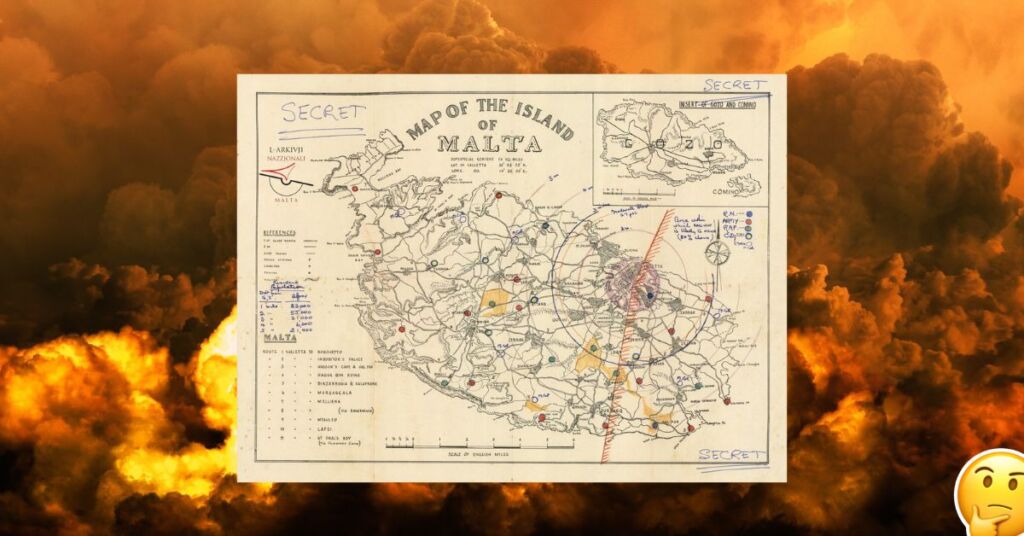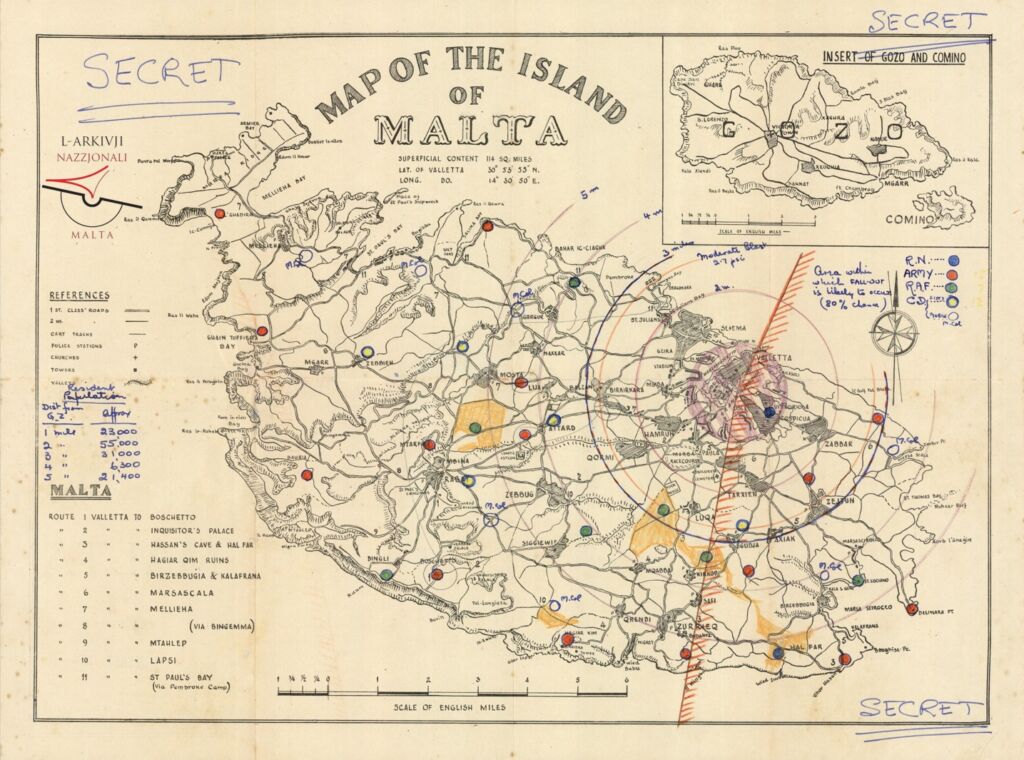Oppenheimer Malta: Half The Population Would Die In Nuclear Bombing, According To 1950s Study

Oppenheimer fever is still sky-high across the world, and Malta’s National Archive is included.
In honour of Christopher Nolan’s nuclear thriller about the world’s first atomic bomb, Malta’s National Archive released some harrowing pieces of history: a 1950s study on what would happen if a one-megaton atomic bomb was dropped on the islands.
Amid a chilling nuclear arms race in the Cold War, local documents dating back to September 1959 illustrate a study on the effects of a massive atomic bomb dropping on Senglea, in the Grand Harbour, with a northwesterly wind – the most common in Malta.
A 1-megaton bomb, without any prior preparations, was estimated to wipe out 143,057 people – around half 1959 Malta’s population of 289,135, leaving 59,747 with potentially crippling injuries.

A map that forms part of the records at the National Archives related to the preparations in case Malta is attacked with an atomic bomb in the 1950s. The scenario was a 1 megaton bomb over Senglea with a northwesterly wind, the most common in Malta. The map includes information about the population living within the first 5 miles of ground zero and the stations of the Royal Navy (R.N.), the Army, the Royal Air Force (R.A.F.) and the Civil Defence (C.D.).
A proposed evacuation scheme in case of a bomb estimated that 41,192 would still die and 62,345 would be left injured.
While an evacuation plan would clearly drop the potential death toll significantly, the impact would still be hugely catastrophic.
Another document detailed secret preparations, such as evacuations into air raid shelters and catacombs, and the deployment of the Royal Navy (R.N.), the Army, the Royal Air Force (R.A.F.) and the Civil Defence (C.D.).
Malta was divided into nine zones and the impact and shelter requirements were modelled.

A September 1959 document estimates the death and injured in the eventuality of a 1 megaton nuclear explosion scenario over Senglea, within the differenti 9 zones in which Malta was divided. Zone 1 (Valletta, Floriana, Cospicua, Senglea, Vittoriosa and Kalkara) would be the worst hit and it was estimated that 90% of the persons there would die and the rest would be seriously injured. This was a scenario with out any evacuation programme.
Zone 1, which included Valletta, Floriana, Cospicua, Senglea, Vittoriosa and Kalkara would be the worst hit and it was estimated that 90% of the persons there would die and the rest would be seriously injured. This was a scenario without any evacuation programme in defence of a 1-megaton bomb.
One megaton is the equivalent of one million tonnes of TNT.
For reference, Little Boy, dropped on Hiroshima in 1945, was 15 kilotons.
The Tsar Bomba, the most powerful nuclear weapon ever created and tested, yielded 50 megatons – ten times more powerful than all of the ordnance that exploded during the whole of World War II.
Online simulations showing what the Tsar bomba would look like on Malta reveals a complete wipeout with next to no survivors.
The world has so far avoided an all-out nuclear war. No nuclear weapon has ever again been deployed against human beings post-Hiroshima and Nagasaki. But until complete nuclear disarmament, the threats of the end of the world as we know it remain.
Do you know what to do in case of an atomic attack?
